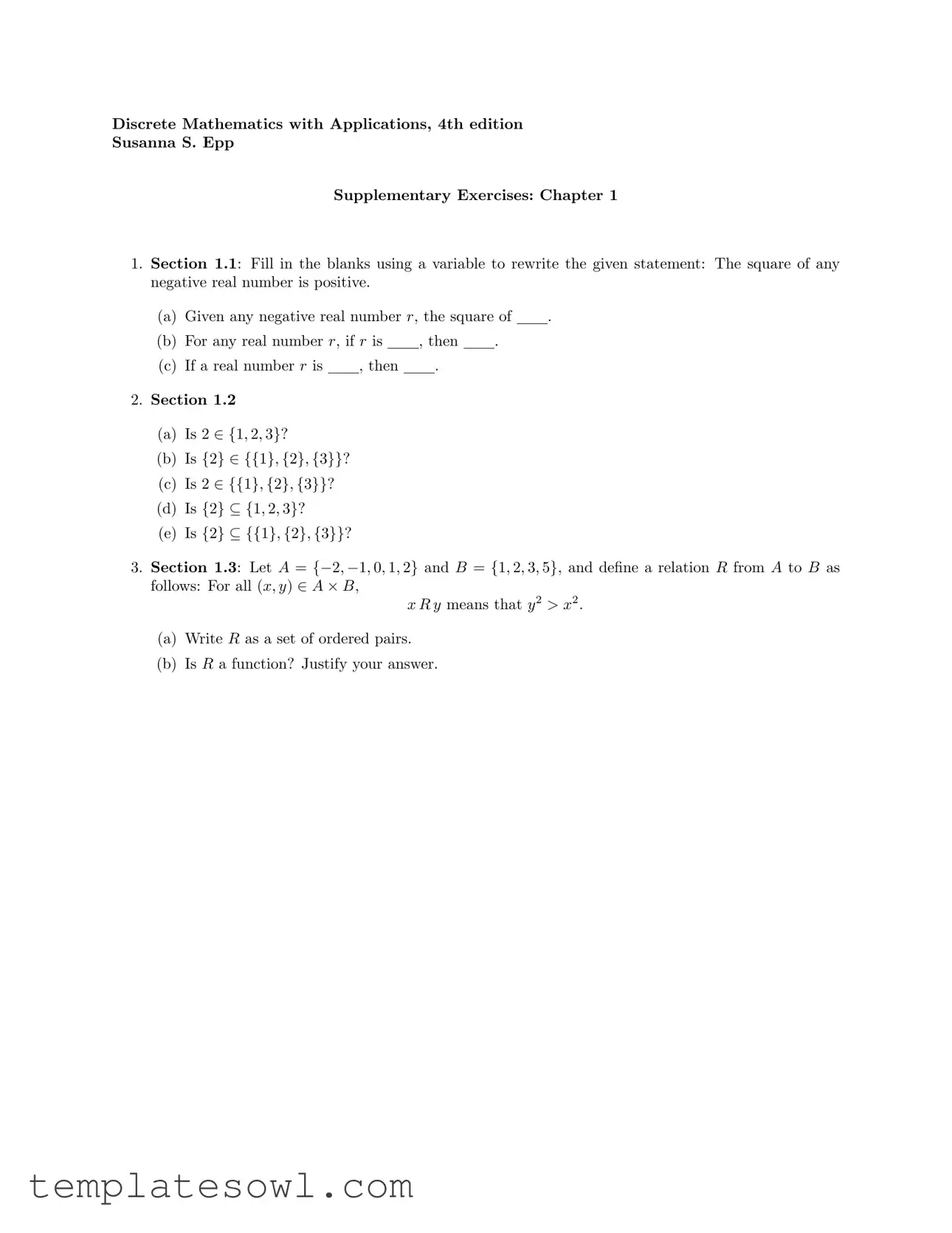What is the purpose of the Discrete Mathematics Application form?
The Discrete Mathematics Application form is designed to assess understanding of key concepts presented in the textbook "Discrete Mathematics with Applications" by Susanna S. Epp. It includes exercises that cover various topics such as variable manipulation, set theory, and relations. Students engage with exercises directly after reading to reinforce learning and gauge their comprehension.
Who is eligible to fill out the application form?
The application form is primarily intended for students enrolled in discrete mathematics courses or anyone seeking to improve their understanding of the subject. Those who have completed relevant coursework will find the form beneficial for consolidating their learning.
What types of questions are included in the application form?
The application form contains a mix of fill-in-the-blank questions and multiple-choice questions. Examples may involve rewriting mathematical statements using variables, determining specific set relationships, and analyzing relations to identify whether they qualify as functions.
How should I complete the fill-in-the-blank exercises?
To successfully complete these exercises, read each statement carefully, then replace the blank with a suitable variable or expression. Ensuring clarity and accuracy in your responses is crucial, as it demonstrates your understanding of the concept being assessed.
What does it mean when a relation is described as a function?
A relation is categorized as a function if each input is related to exactly one output. In the context of the exercises, if you can find instances where a single element from set A relates to multiple elements in set B, then it does not qualify as a function. Justifying your answers with logical reasoning is essential.
Are there specific instructions for submitting the completed form?
Once the application form is completed, it should be submitted according to the guidelines provided by the instructor or the designated submission method. Ensure that all responses are clear, legible, and well-organized before submission to facilitate easy review.
Is there a deadline for submitting the application form?
Yes, there typically is a deadline for submitting the application form. This date will be communicated by the instructor or listed in the course syllabus. Adhering to deadlines is important for timely grading and feedback.
Can I seek help if I am struggling with the exercises?
Yes, if assistance is needed, students are encouraged to seek help from their instructors, teaching assistants, or classmates. Additionally, studying in groups can often clarify concepts and lead to a better understanding of discrete mathematics topics.
